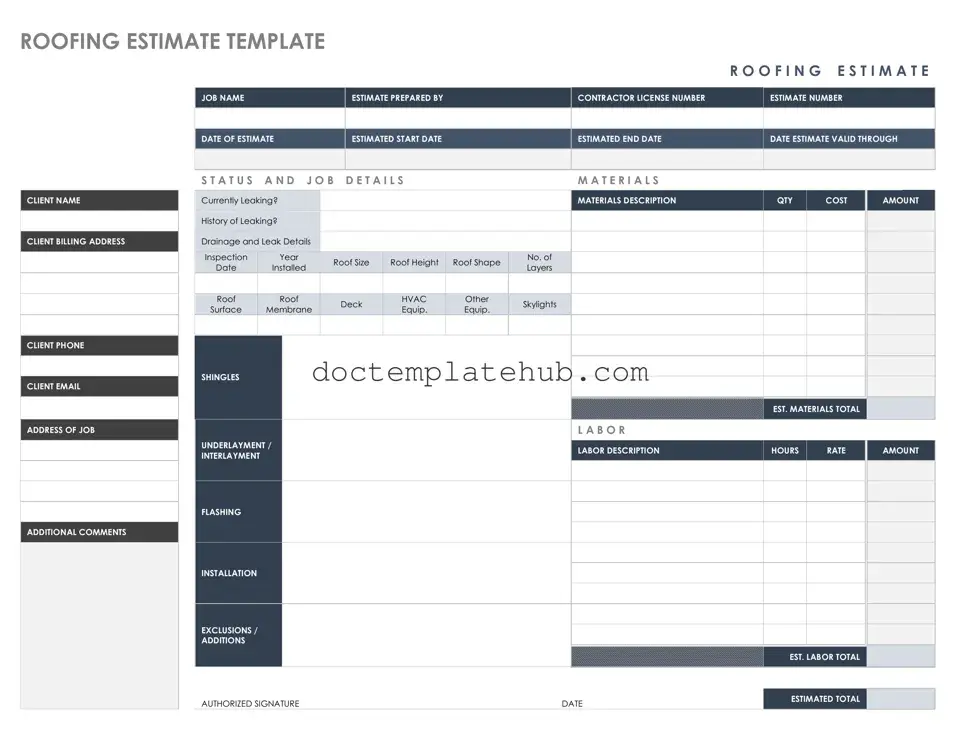What is a Roofing Estimate form?
A Roofing Estimate form is a document that outlines the anticipated costs and scope of work for a roofing project. It provides homeowners with a detailed breakdown of materials, labor, and any additional expenses that may arise during the roofing process. This form helps ensure transparency and allows homeowners to make informed decisions regarding their roofing needs.
Why do I need a Roofing Estimate form?
This form is essential for several reasons. First, it allows you to compare different contractors and their pricing. Second, it provides a clear understanding of what to expect during the project, including timelines and materials used. Lastly, having a written estimate can protect you in case of disputes or misunderstandings with the contractor.
How do I fill out a Roofing Estimate form?
To fill out a Roofing Estimate form, start by providing your contact information and the address of the property where the work will be performed. Next, describe the current condition of your roof and any specific issues you are experiencing. You may also want to specify your preferences for materials or styles. Finally, submit the form to your chosen contractor for their review and pricing.
What information should I expect to see in a Roofing Estimate?
A comprehensive Roofing Estimate will typically include the estimated cost of materials, labor charges, and any additional fees, such as permits or disposal of old roofing materials. It may also outline the projected timeline for the project and the warranty information for both materials and workmanship.
How long does it take to receive a Roofing Estimate?
The time it takes to receive a Roofing Estimate can vary depending on the contractor's workload and the complexity of your project. Generally, you can expect to receive an estimate within a few days to a week after submitting your request. If you require a quicker response, be sure to communicate this with your contractor.
Can I negotiate the terms of the Roofing Estimate?
Yes, negotiating the terms of a Roofing Estimate is often possible. If you feel that the estimate is higher than your budget or if you have received lower quotes from other contractors, discuss your concerns with the contractor. They may be willing to adjust the pricing or offer alternatives that fit your needs.
What should I do if I have questions about the Roofing Estimate?
If you have questions about the Roofing Estimate, reach out to the contractor directly. It is essential to clarify any uncertainties before the work begins. A reputable contractor will be happy to explain the details of the estimate and address your concerns.
Is a Roofing Estimate legally binding?
A Roofing Estimate is typically not legally binding unless it is accompanied by a signed contract. However, it does serve as a good faith estimate of the costs and scope of work. Once you agree to the terms and sign a contract, that document will outline the legally binding obligations of both parties.
What if the final cost exceeds the Roofing Estimate?
If the final cost of the roofing project exceeds the original estimate, the contractor should provide a detailed explanation for the increase. It is important to have a conversation about any unexpected costs before proceeding with additional work. A reputable contractor will communicate openly and ensure that you understand any changes to the original estimate.
